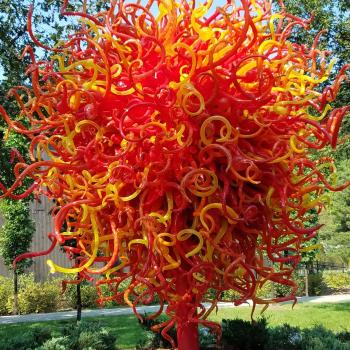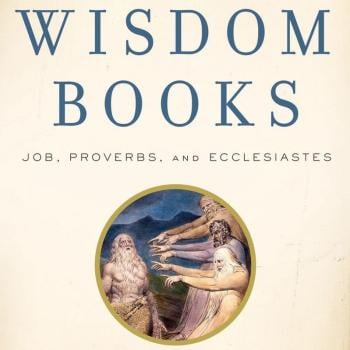Here’s an excellent follow up blog to the ones posted previously here, a post by my friend and colleague Larry Hurtado. See what you think. BW3
by larryhurtado
The discussion of Andrew Loke’s new book in which he proposes that Jesus saw and spoke of himself as “truly divine” reminded me of some interesting Qumran fragments and the discussion about them.[1]
These fragments are often referred to by scholars as portions of a “Self-Glorification Hymn” in which an unidentified human figure (it seems) portrays himself as exalted to heavenly status, sitting prominently among “the gods” and given vast heavenly secrets. The texts in question are: 4Q471b and 4Q491c, and also 4Q427 (which is a portion of 4QHodayot (the Qumran “hymn collection”).
The speaker in 4Q427, for example, declares himself “a friend of the king [likely here God], companion of the holy ones [angels],” and claims to have an incomparable glory given to him. In 4Q471b, the speaker declares “who is like me among the gods,” and “who can be compared to my glory.” In 4Q491c also, the speaker likewise claims an incomparable glory, and says “I am counted among the gods and my dwelling is in the holy congregation.”[2] And note that the speaker of these texts is portrayed as apparently still living a mortal existence.
The point is that such notions of heavenly exaltation of selected human figures were in the air of second-temple Jewish tradition, which is why I wrote that Loke’s proposal that Jesus saw himself as bearing some kind of “divine” status not inconceivable, in principle. The question is whether the extant Gospel traditions provide us with evidence that Jesus actually did teach his disciples something along these lines.
The fragmentary nature of these Qumran manuscripts, and the absence in the fragments of any explicit identification of the speaker, have combined to generate various scholarly proposals about who this figure is. Martin Abegg, for example, reviewed briefly previous scholarly proposals (e.g., by Maurice Gaillet, Morton Smith, and John J. Collins), concluding that “the Teacher of Righteousness [a figure mentioned in some other Qumran texts], the acknowledged founder of the Qumran community, is a strong candidate.” Abegg also suggested that it is possible that the claim of heavenly ascent was made on his behalf by the author of the text(s).[3]
Abegg proposed that we may have a somewhat analogous kind of claim and experience portrayed by Paul in 2 Corinthians 12:2-5, where, among his “countless visions” Paul describes being caught up into “the third heaven” and hearing marvellous things that he is not free to share.
But Morton Smith (one of the earlier scholars to comment on these Qumran texts) went much farther, proposing that they support his claims that Jesus himself had similar visionary experiences and even “founded a mystery cult” with himself as its object.[4] Smith pointed to the narratives of the transfiguration (e.g., Mark 9) and resurrection-experiences as reflecting the sort of mystical experiences that Jesus promoted and that were shared by his disciples.[5]
Smith’s proposals about Jesus and his supposed “mystery cult” haven’t caught on with other scholars, regardless of their individual religious stances. But in an earlier work, J.D.G. Dunn urged readers to consider more seriously what sort of piety and religious life/experiences Jesus may have had.[6] I agree. A historical approach to Jesus should make ample room for him as a devout Jew of his time, not a modern systematic theologian (or liberal Protestant, or Cynic teacher, or whatever), but a Jewish man who not only talked about God but likely had religious experiences as well. Whether Jesus taught that he was “truly divine” remains a debated question. But I think it is most likely that Jesus did see himself as God’s unique agent/vehicle of the kingdom of God, and that he generated the expectation among his disciples that he was, or would be declared by God, the hoped-for Messiah.
[1] Curiously, I don’t recall Loke dealing with these texts.
[2] In Qumran texts, heavenly/angelic beings are often referred to as “gods” (Hebrew: elim].
[3] Martin G. Abegg, “Who Ascended to Heaven? 4Q491, 4Q427, and the Teacher of Righteousness,” in Eschatology, Messianism, and the Dead Sea Scrolls, ed. Craig A. Evans and Peter W. Flint (Grand Rapids: Eerdmans, 1997), 61-73, citing 72. In a more recent study, Eric Miller proposed that the figure in these texts is Enoch, and the texts are an imaginative literary meditation on him (as reflected also in portions of 1 Enoch and other texts): “The Self-Glorification Hymn Reexamined,” Henoch 31.2 (2009): 307-24.
[4] Morton Smith, “Two Ascended Into Heaven: Jesus and the Author of 4Q491,” in Jesus and the Dead Sea Scrolls, ed. J. H. Charlesworth (New York: Doubleday, 1992), 290-301, citing 291.
[5] Smith, “Two Ascended,” 298-99.
[6] J. D. G. Dunn, Jesus and the Spirit: A Study of the Religious and Charismatic Experience of Jesus and the First Christians As Reflected in the New Testament (Philadelphia: The Westminster Press, 1975).















